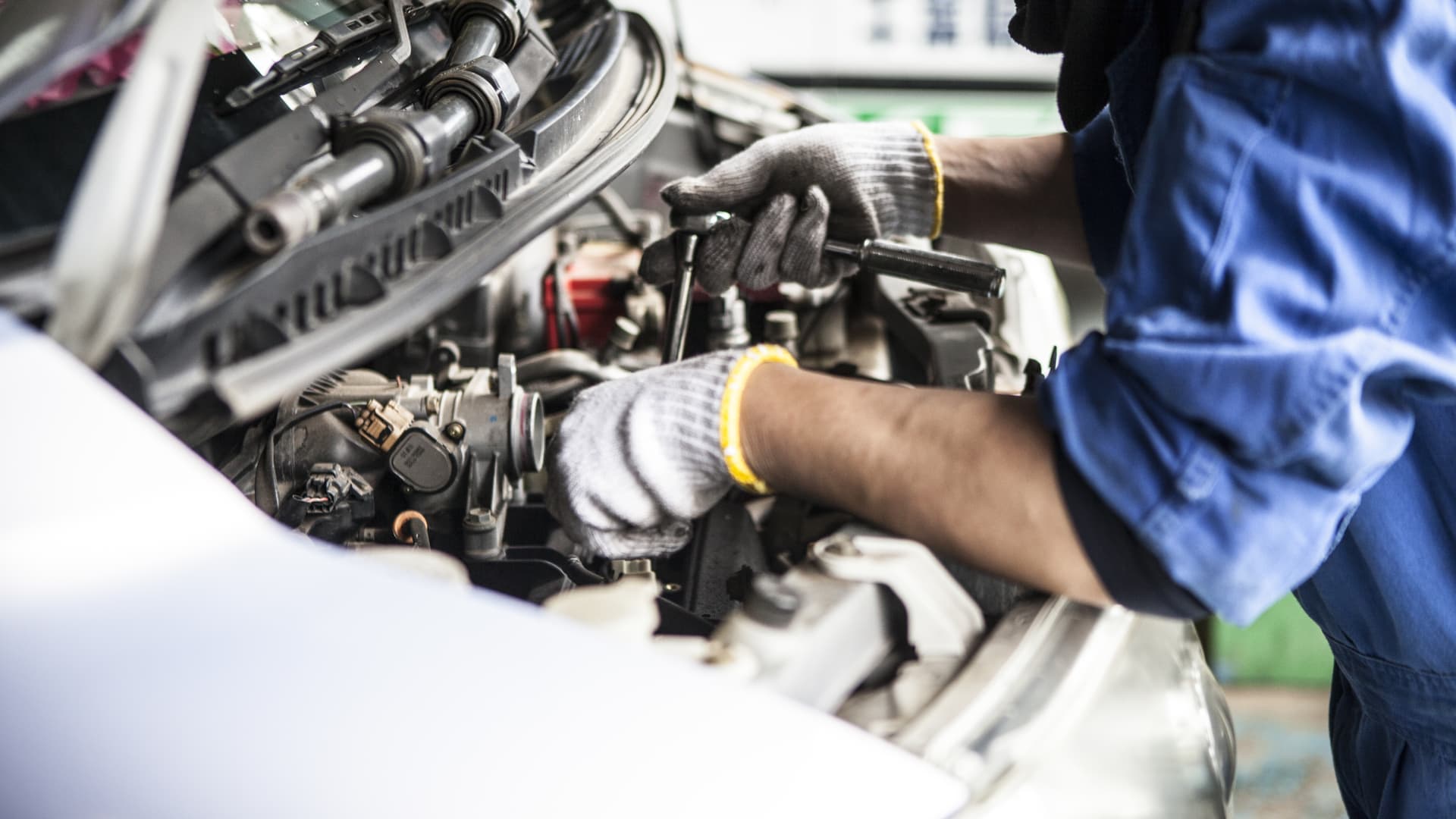Products You May Like
Car repair costs are up almost 20% in the past year, according to the consumer price index — more than six times the national inflation rate and among the largest annual price increases of any household good or service.
So, what’s driving up prices?
It’s a combination of factors, experts said. Some emerged in the pandemic era while others are longer-term trends in the auto market, they said. Here’s a look at six reasons why you’re paying more for car repairs.
1. More technology in cars
Common car repairs can run consumers $500 to $600 a visit and sometimes “much higher,” according to AAA.
More advanced — and more expensive — technology in vehicles is a big reason for higher repair costs, said Robert Sinclair Jr., a spokesman for AAA Northeast.
Take advanced driver-assistance systems, for example. Such technologies — including auto emergency braking, lane keeping assist or cross-traffic alert systems — have “proliferated” and are available in just about any vehicle, Sinclair said.
Electronic sensors to facilitate these technologies are found in bumpers, fenders and grilles, which are commonly damaged in wrecks, he said.
More from Personal Finance:
Why auto insurers are raising rates
Here’s the inflation breakdown for June, in one chart
A controversial hack to save on plane tickets carries a ‘super big risk’
Put another way, cars today are like computers that run on gasoline or electricity, said Skyler Chadwick, director of product consulting at Cox Automotive.
Not only are there higher costs associated with fixing broken technology, but the tech also requires more precision and time for auto body work. For example, the thickness of paint on a car bumper must be “just right” so the sensors work properly, Sinclair said.
Consider this: One repair shop proprietor told Sinclair that striking a deer with a vehicle can lead to roughly $1,500 to $2,000 more in repairs today than it did 15 years ago due to these technologies.
2. Ongoing supply-chain issues
It’s not just technology, though: Many car parts have become pricier in the pandemic era due to supply-chain issues, Sinclair said. Those supply-chain issues create shortages of certain components (such as microchips), making it tougher and pricier to replace parts during a repair.
“Supply chain problems we saw in the pandemic essentially continue,” he said.
Major long-term shifts in the auto industry — toward more automation and electric vehicles — also require more chips and put “further strain on an already stretched industry,” according to J.P. Morgan.
3. Longer vehicle ownership
Cars on the road have also gotten gradually older, raising the likelihood of “major repairs” being necessary, Chadwick said.
The average age of passenger cars and trucks in operation increased to 12.2 years in 2022, up from about 10.5 years in 2010, according to S&P Global Mobility.
Pandemic-era shortages for auto parts put upward pressure on average vehicle age. Shortages translated to a lower inventory of new and used cars, and consumers held on to their current cars for a longer time, wrote S&P Global Mobility analysts.
Higher interest rates starting in early 2022 also meant it was more expensive to buy a car, Chadwick said.
4. More car crashes
The prevalence of car crashes jumped in the pandemic era, experts said.
There were 6.1 million crashes reported to the police in 2021, up from about 5.3 million in 2020, according to data compiled by the National Highway Traffic Safety Administration.
Fatalities have also increased: There were almost 43,000 deaths from motor-vehicle accidents in 2021, according to the NHTSA — the highest tally since 2005 and a 10.5% jump from 2020, the largest annual percentage increase on record. The number of auto deaths in 2022 was similar, though slightly less, at 42,795.
More auto wrecks mean greater demand for mechanics, raising prices for car repairs, Sinclair said.
5. Fewer auto repair technicians
Meanwhile, there’s been a dearth of available mechanics to meet that greater demand, translating to higher labor costs, auto experts said.
In 2021, for example, about 733,000 automotive technicians were employed — a nearly 5% decline from about 770,000 in 2018, the recent high point, according to the latest data from the TechForce Foundation, a nonprofit group advocating for technical careers.
There were about 56,000 unfilled auto-technician positions from 2021 heading into 2022, its data shows.
Auto dealers ranked “service” as the business area suffering most from staffing issues, according to Cox Automotive’s Q2 Dealer Sentiment Index.
6. High-tech service appointments
Many repair shops — particularly at dealerships — have started sharing photos and videos of potential problems with customers, kind of like a telehealth appointment for their car, Chadwick said. That service increases the average repair cost by $260, he said.
“If I can actually take a video and show you your oil pan is leaking really bad … it makes more sense to me as a consumer to get that work done,” he explained.
Overall, revenue generated by each repair order was up 31.8% in June relative to January 2019, according to Cox Automotive data.
